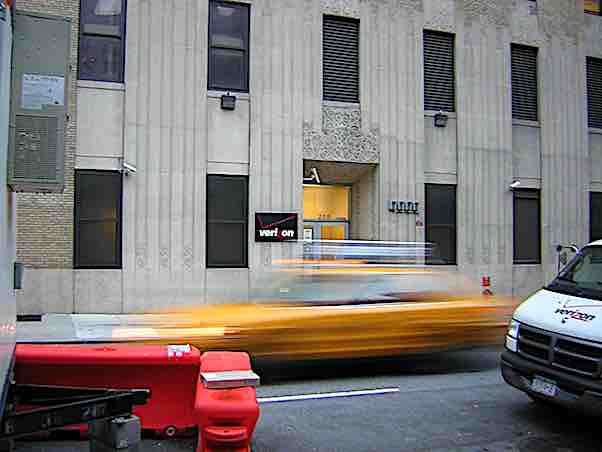
Verizon Communications Inc. has an organizational structure that facilitates and accounts for business growth and expansion of services. This corporate structure is a result of adjustments or reforms to address telecommunications market demand and information and communications technologies. The company’s organizational structure or corporate structure determines the interactions among employees and workgroups, based on the design, system, and composition of the organization. Verizon’s corporate structure is based on the nature of the business, as represented in the structural divisions. The current structural features of the business reflect expansion efforts, including the acquisition of firms. Verizon’s current organizational structure indicates shifts in the significance, revenue contributions, and profit contributions of operations and subsidiaries in the telecommunications industry.
The corporate structure of Verizon Communications Inc. addresses changes in telecommunications, mass media, and information and communications technology. As a structural characteristic, customer-based divisions are established to consider the current and future expansion of the business. Verizon’s wireless services and other business operations remain the focus, but changes are implemented in the organizational structure to achieve strategic goals based on Verizon’s mission statement and vision statement. The company’s corporate structure continues to evolve as the telecommunications industry changes over time.
Verizon’s Organizational Structure Type & Characteristics
Verizon has a customer-based divisional organizational structure. This company structure is a result of restructuring for business focus and growth. The current corporate structure is designed to enable the business to satisfy the managerial needs of structural divisions and the expectations of target customers in the telecommunications market. The following characteristics define Verizon’s organizational structure:
- Customer-based divisions (most significant)
- Corporate hierarchy
- Geographical segments
Customer-Based Divisions. These divisions are the main feature of Verizon’s corporate structure. This structural characteristic recognizes the differences between different types of customers: individual consumers and organizations. The customer-based divisions in the organizational structure of Verizon Communications Inc. are:
- Verizon Consumer Group
- Verizon Business Group
Verizon Consumer Group provides services to individual customers who typically need personal plans, such as wireless Internet plans for their personal mobile devices. On the other hand, Verizon Business Group provides services to organizations, such as companies and government businesses. With its organizational design, the company provides wireline and wireless services to both types of customers. The organizational structure’s focus on customers reinforces the competitive advantages shown in the SWOT analysis of Verizon.
Corporate Hierarchy. This structural characteristic has a supporting role in influencing the interactions among Verizon’s employees and work units. This hierarchy enables the business to manage its operations as an integrated whole through the organizational structure. For example, an executive is responsible for the company’s information and technology architecture. Another executive is responsible for marketing. Each of the other main functional areas of the business is under a senior manager or executive with strategic direction from Verizon’s headquarters. Also, this feature of the organizational structure is developed around the main customer-based divisions. For instance, the hierarchy allows corporate managers to address the strategic concerns of the company’s wireless operations for businesses. Thus, the corporate structure supports the need to seamlessly manage, grow, and expand the operations of Verizon Communications Inc. with the following departments:
- Administrative, Legal, and Public Policy
- Finance
- Global Network & Technology
- Human Resources
- Marketing
- Strategy
Geographical Segments. Geographical segments are a minor structural characteristic that influences decision-making processes among Verizon’s management teams. Considering that the emphasis of the organizational structure is on the divisions based on type of customers, geographical segments are not the main basis for strategy formulation. Verizon’s corporate strategies consider all operations per customer-based division of the company structure. Also, because of the operational focus on the U.S. telecommunications market, the corporate structure’s geographical segments are a minor consideration in strategic formulation among managers. Nonetheless, with the company’s increasing potential for global expansion, Verizon’s organizational structure has the following geographical segments:
- United States
- International
Verizon’s Structure: Advantages & Disadvantages, Recommendations
The organizational structure of Verizon Communications Inc. evolves to address changing market and industry conditions. The company structure has changed to account for main business operations in the telecommunications market, supporting the implementation of Verizon’s generic competitive strategy and intensive growth strategies. The current characteristics of the business structure also account for operations and opportunities in relation to the information and communications technology and services industry. Thus, an advantage of this corporate structure is that it supports and facilitates business growth in the telecommunications market. Another advantage of Verizon’s organizational structure is its support for integrating the company through corporate functions, as reflected in the centralized corporate hierarchy that runs from the company’s headquarters to all areas throughout the business organization.
Despite the benefits of its corporate structure, Verizon Communications Inc. experiences the disadvantage of its limited structural support for international expansion. This condition is understandable because the company focuses its operations on the U.S. telecommunications market. However, the PESTEL/PESTLE analysis of Verizon shows business growth opportunities in the international market. For example, there are opportunities to expand wireless telecommunications service operations internationally. Thus, a recommendation to improve the company’s organizational structure is to increase the significance of geographical segments in Verizon’s strategic decision-making processes. This recommendation aims to enhance the corporate structure’s support for the company’s international expansion.
References
- Alawamleh, M., Ismail, L. B., Madani, F., & Omeish, F. (2024). The effect of organisational structure on the performance of the telecommunications industry. International Journal of Business Performance Management, 25(4), 519-542.
- Albert, D. (2024). What do you mean by organizational structure? Acknowledging and harmonizing differences and commonalities in three prominent perspectives. Journal of Organization Design, 13(1), 1-11.
- Verizon Communications Inc. – Executive Leadership.
- Verizon Communications Inc. – Form 10-K.
- Verizon Fact Sheet.